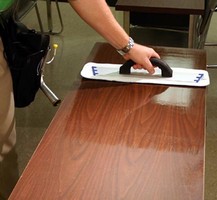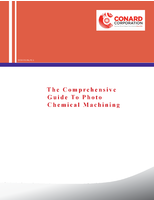Cleaning Wipe Aims for MRSA Pathogen

Hamilton, Ohio-November 27, 2007- The deadly MRSA germ is the target of a new cleaning system developed by Kaivac Inc., a company that has already made its mark on commercial and public lavatory cleaning with its patented, no-touch approach.
Kaivac founder Rob Robinson Sr. recently unveiled the KaiFly at the International Sanitary Supply and Association trade show in Orlando, Fla., where thousands of school administrators annually gather for insight into how to stop dangerous germs.
"This year, we brought world-renowned scientists to Hamilton to watch our cleaning method and do a scientific analysis of what we were doing and how it was different from a mopping system," Robinson said.
"The results were shocking. A flat or string mop - even a microfiber mop - left 35 times more bacteria than the Kaivac. It's the difference between cleaning for health and cleaning for appearance. It has immense implications for students, hospital patients and others."
The KaiFly system is an offshoot of the Kaivac No-Touch Cleaning system, invented by Robinson in 1998. It sprays disinfectants on school or commercial lavatory walls and fixtures before vacuuming up the material.
KaiFly is a cleaner dispenser and pad used to swipe flat surfaces before the cleaning solution is swiped away by a squeegee.
The MRSA germ (short for methicillin-resistant staphylococcus aureus) is believed responsible for 19,000 deaths and 94,000 serious infections each year - many, if not most, occurring in public settings such as classrooms, according to a new study based on data from nine cities and counties in the United States.
KaiFly Kills The Germ On Contact.
"This works on cafeteria tables, restaurants, in health-care settings," Robinson said. "We are mainly focusing on schools because nobody is cleaning these desktops."
The research was based on experimentation on a desk in a kindergarten that Robinson's granddaughter attends. Standard rag cleaning, with the cleaning solution left to air-dry, left behind "85 times more bacteria than this method," Robinson said. "That blew our minds."
Paul South, president of Valley Janitor Supply Co., a sister company to Kaivac, said he's received dozens of phone calls from school officials keen to learn about ways to disinfect schools.
"There's a lot of panic about what can be done to combat this," South said. "Our recommendation is not to put a Band-Aid on a broken leg. A one-time disinfection is important, but there needs to be an approach that deals with the problem at all touch points." Touch points include doorknobs, stairway railings, faucet handles and desktops.
Restrooms at most schools are usually so unhygienic that company officials have given those areas a nickname: biohazard waste transfer stations. "Some school systems need to change their whole cleaning philosophy," South said.
Other Areas Of School Are Equally Dirty.
"The fact is the pencil sharpener is the epicenter of cross-contamination," Robinson said. "By cleaning desktops properly, schools can reduce their absenteeism rate by 50 percent."
The President of Kaivac, Robert Robinson Sr., who has been in the jansan industry for more than a decade is available to discuss jansan industry issues and trends. He may be reached by calling: 800-287-1136
About Kaivac
Headquartered in Hamilton, OH, and the originator of No-Touch Cleaning(TM) system, Kaivac, Inc., manufactures a full line of No-Touch cleaning products aimed at making cleaning processes safer for people and the environment while preserving quality and cost efficiency. For more information on the company and its products, call 1-800-287-1136 or visit www.kaivac.com.




